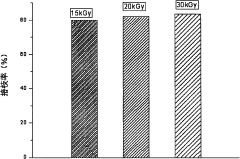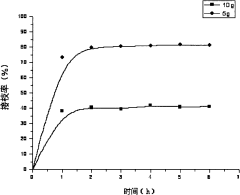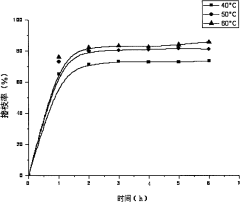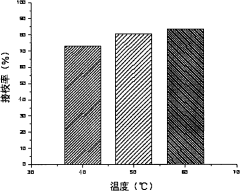How to Optimize PVDF for Use in High Frequency Applications?
PVDF High Frequency Optimization Background
Polyvinylidene fluoride (PVDF) has emerged as a crucial material in high-frequency applications due to its unique properties and versatile nature. The optimization of PVDF for these applications has become increasingly important as the demand for high-performance electronic devices continues to grow. This technological evolution is driven by the need for materials that can withstand extreme conditions while maintaining excellent electrical and mechanical properties.
The journey of PVDF in high-frequency applications began in the 1960s when its piezoelectric properties were first discovered. Since then, researchers and engineers have been exploring ways to enhance its performance in various electronic and acoustic devices. The primary goal of optimizing PVDF for high-frequency use is to improve its dielectric properties, reduce losses, and increase its operational frequency range.
As technology progresses, the requirements for materials used in high-frequency applications become more stringent. PVDF optimization efforts are focused on addressing several key challenges, including reducing dielectric loss, improving thermal stability, and enhancing its overall frequency response. These improvements are critical for applications such as 5G communications, radar systems, and high-speed data transmission.
The evolution of PVDF optimization techniques has been marked by significant milestones. Early efforts concentrated on modifying the polymer's crystalline structure to enhance its piezoelectric properties. Later developments involved the creation of PVDF copolymers and composites to fine-tune its electrical characteristics. Recent advancements have explored nanotechnology and advanced processing methods to push the boundaries of PVDF's high-frequency performance.
Current research in PVDF optimization is driven by the increasing demand for miniaturization and higher operating frequencies in electronic devices. Scientists are investigating novel approaches such as controlled orientation of PVDF molecules, incorporation of nanofillers, and development of multilayer structures to achieve superior high-frequency properties.
The optimization of PVDF for high-frequency applications intersects with various fields of study, including materials science, electrical engineering, and polymer chemistry. This interdisciplinary nature of the research has led to collaborative efforts between academic institutions and industry partners, accelerating the pace of innovation and discovery in this domain.
As we look towards the future, the optimization of PVDF for high-frequency applications is expected to play a crucial role in enabling next-generation technologies. From advanced communication systems to cutting-edge medical devices, the potential applications of optimized PVDF are vast and continue to expand. The ongoing research in this field promises to unlock new possibilities and push the boundaries of what is achievable with this remarkable material.
Market Analysis for High Frequency PVDF Applications
The market for high-frequency PVDF applications is experiencing significant growth, driven by the increasing demand for advanced electronic components in various industries. PVDF, or polyvinylidene fluoride, has emerged as a crucial material in high-frequency applications due to its unique properties, including excellent dielectric strength, low dissipation factor, and high thermal stability.
The telecommunications sector represents a major market for high-frequency PVDF applications, particularly in the development of 5G and future 6G technologies. As these networks require higher frequency bands and improved signal integrity, PVDF-based components are becoming essential for antenna systems, filters, and other RF devices. The automotive industry is another key market, with the growing adoption of advanced driver assistance systems (ADAS) and autonomous vehicles driving the demand for high-frequency sensors and radar systems that utilize PVDF materials.
In the aerospace and defense sectors, high-frequency PVDF applications are gaining traction in radar systems, satellite communications, and electronic warfare equipment. The material's ability to maintain performance under extreme conditions makes it particularly valuable in these demanding environments. The medical industry is also exploring PVDF for high-frequency ultrasound imaging devices, leveraging its piezoelectric properties to enhance image resolution and diagnostic capabilities.
The global market for high-frequency PVDF applications is projected to grow substantially over the next decade. This growth is fueled by the ongoing digital transformation across industries and the increasing need for high-performance electronic components. Asia-Pacific region, particularly China, Japan, and South Korea, is expected to be a major contributor to this market expansion, driven by their strong electronics manufacturing base and investments in next-generation technologies.
However, the market faces challenges such as the high cost of PVDF compared to alternative materials and the complexity of optimizing PVDF for specific high-frequency applications. These factors may limit adoption in price-sensitive markets or applications where performance requirements are less stringent. Despite these challenges, ongoing research and development efforts are focused on improving PVDF's high-frequency performance and reducing production costs, which is likely to expand its market potential in the coming years.
As industries continue to push the boundaries of electronic performance, the demand for optimized PVDF in high-frequency applications is expected to grow. This trend is likely to drive further innovation in material science and manufacturing processes, potentially opening up new market opportunities and applications for PVDF-based high-frequency components.
Current PVDF Limitations in High Frequency Use
Polyvinylidene fluoride (PVDF) has gained significant attention in high-frequency applications due to its unique properties. However, its use in this domain is not without limitations. The current challenges in optimizing PVDF for high-frequency applications stem from several inherent characteristics of the material.
One of the primary limitations is the frequency-dependent dielectric behavior of PVDF. As the frequency increases, the dielectric constant of PVDF tends to decrease, which can lead to reduced performance in high-frequency applications. This behavior is particularly problematic in applications requiring stable dielectric properties across a wide frequency range.
Another significant limitation is the relatively high dielectric loss of PVDF at high frequencies. This loss factor increases with frequency, resulting in energy dissipation and reduced efficiency in high-frequency circuits. The increased loss can lead to signal attenuation and distortion, which is undesirable in many high-frequency applications, such as telecommunications and radar systems.
The piezoelectric properties of PVDF, while beneficial in some applications, can be a limitation in high-frequency use. The piezoelectric effect can introduce unwanted mechanical resonances and vibrations, potentially interfering with the desired electrical performance at high frequencies. This can lead to signal distortion and reduced reliability in sensitive high-frequency circuits.
Temperature sensitivity is another factor limiting PVDF's performance in high-frequency applications. The material's properties, including its dielectric constant and loss factor, can vary significantly with temperature changes. This temperature dependence can lead to inconsistent performance in high-frequency devices operating across a wide temperature range.
The crystalline structure of PVDF also presents challenges in high-frequency applications. The semi-crystalline nature of the polymer can result in inhomogeneities in its electrical properties, leading to variations in performance across different samples or even within the same sample. This lack of uniformity can be particularly problematic in precision high-frequency applications.
Furthermore, the processing and fabrication of PVDF for high-frequency applications can be challenging. Achieving the desired molecular orientation and crystalline phase, which are crucial for optimal high-frequency performance, often requires specialized processing techniques. This can increase manufacturing complexity and cost, potentially limiting the widespread adoption of PVDF in certain high-frequency applications.
Lastly, the mechanical properties of PVDF, while generally good, may not always meet the stringent requirements of some high-frequency applications. Issues such as creep and fatigue under prolonged high-frequency operation can affect the long-term reliability and performance of PVDF-based components.
Existing PVDF Optimization Techniques
01 PVDF membrane modification techniques
Various methods are employed to optimize PVDF membranes, including surface modification, blending with other polymers, and incorporating nanoparticles. These techniques aim to enhance properties such as hydrophilicity, fouling resistance, and mechanical strength, making the membranes more suitable for specific applications in filtration and separation processes.- PVDF membrane modification: Various techniques are employed to modify PVDF membranes, enhancing their properties for specific applications. These modifications can include surface treatments, blending with other polymers, or incorporating additives to improve characteristics such as hydrophilicity, fouling resistance, or mechanical strength.
- PVDF-based composite materials: Development of PVDF-based composite materials involves combining PVDF with other materials to create new products with enhanced properties. These composites can offer improved mechanical, thermal, or electrical characteristics, making them suitable for a wide range of applications in various industries.
- PVDF processing optimization: Optimization of PVDF processing techniques focuses on improving manufacturing methods to enhance the quality and performance of PVDF products. This can include adjustments to extrusion parameters, molding conditions, or post-processing treatments to achieve desired material properties and product characteristics.
- PVDF for energy storage applications: Research and development efforts are directed towards optimizing PVDF for use in energy storage applications, particularly in battery technologies. This includes modifying PVDF to improve its performance as a binder material in electrodes or as a separator in lithium-ion batteries, enhancing overall battery efficiency and longevity.
- PVDF in filtration and separation technologies: Optimization of PVDF for filtration and separation applications involves developing new membrane structures and surface modifications to enhance filtration efficiency, fouling resistance, and selectivity. This research aims to improve PVDF's performance in water treatment, gas separation, and other industrial separation processes.
02 PVDF-based composite materials
Researchers are developing PVDF-based composite materials by combining PVDF with other materials such as carbon nanotubes, graphene, or metal oxides. These composites often exhibit improved mechanical, electrical, or thermal properties, making them suitable for applications in energy storage, sensors, and actuators.Expand Specific Solutions03 PVDF processing optimization
Optimization of PVDF processing parameters, including extrusion conditions, solvent selection, and crystallization control, is crucial for achieving desired material properties. Techniques such as electrospinning, solution casting, and melt processing are being refined to produce PVDF materials with tailored morphologies and performance characteristics.Expand Specific Solutions04 PVDF copolymers and blends
Development of PVDF copolymers and blends with other polymers is an active area of research. These modified materials often exhibit enhanced properties such as improved flexibility, chemical resistance, or piezoelectric response, expanding the range of potential applications for PVDF-based materials.Expand Specific Solutions05 PVDF in energy harvesting and storage
Optimization of PVDF for energy-related applications, particularly in piezoelectric energy harvesting and battery separators, is gaining attention. Researchers are focusing on enhancing the piezoelectric properties of PVDF and improving its performance in lithium-ion battery separators through various modification techniques and processing methods.Expand Specific Solutions
Key Players in PVDF High Frequency Market
The optimization of PVDF for high frequency applications is in a growth phase, with increasing market demand driven by advancements in electronics and telecommunications. The global market size for specialized PVDF is expanding, reflecting its importance in high-performance materials. Technologically, the field is moderately mature but still evolving. Companies like Arkema, Inc., Solvay SA, and Wanhua Chemical Group Co., Ltd. are at the forefront, leveraging their expertise in fluoropolymers. Academic institutions such as Nankai University and Fudan University contribute significant research. Emerging players like Zhejiang Juhua Co. Ltd. and Sinochem Lantian Co., Ltd. are also making strides, indicating a competitive and innovation-driven landscape in PVDF optimization for high frequency applications.
Arkema, Inc.
Arkema France SA
Innovative PVDF Modification Approaches
- The emulsion grafting method is used to carry out the grafting reaction in water, trigger the reaction between polyvinylidene fluoride powder and glycidyl methacrylate through pre-irradiation, use gamma rays or electron beams to pre-irradiate, and combine dispersants such as Tween and Tween. Span, control reaction conditions such as temperature and time, and avoid using organic solvents.
- A continuous manufacturing process using a master batch concentrate with a carrier resin and nucleating agents to achieve high melt viscosity, allowing for the production of self-supporting PVDF foams with a dense skin, where the foam is processed through an extruder and sized without external support, resulting in a structure with reduced density and improved mechanical properties.
Environmental Impact of PVDF Production
The production of Polyvinylidene Fluoride (PVDF) for high-frequency applications has significant environmental implications that warrant careful consideration. The manufacturing process of PVDF involves the use of various chemicals and energy-intensive procedures, which can contribute to environmental degradation if not managed properly.
One of the primary environmental concerns is the emission of greenhouse gases during PVDF production. The polymerization process requires high temperatures and pressures, leading to substantial energy consumption and associated carbon dioxide emissions. Additionally, the production of the monomer vinylidene fluoride often involves the use of chlorofluorocarbons (CFCs) or hydrochlorofluorocarbons (HCFCs), which are known to deplete the ozone layer and contribute to global warming.
Water pollution is another critical environmental issue associated with PVDF manufacturing. The production process generates wastewater containing various chemical compounds, including unreacted monomers, solvents, and other potentially harmful substances. If not treated adequately, these effluents can contaminate water bodies and pose risks to aquatic ecosystems and human health.
The use of fluorine-containing compounds in PVDF production also raises concerns about the potential release of perfluorinated chemicals (PFCs) into the environment. PFCs are persistent organic pollutants that can accumulate in living organisms and have been linked to various health and environmental issues. Proper handling and disposal of these chemicals are crucial to minimize their environmental impact.
Furthermore, the optimization of PVDF for high-frequency applications may involve the incorporation of additives or modifications to the polymer structure. These processes can introduce additional environmental challenges, such as increased resource consumption and the generation of hazardous waste materials. It is essential to consider the entire lifecycle of PVDF products, including their disposal or recycling, to fully assess their environmental footprint.
To mitigate these environmental impacts, researchers and manufacturers are exploring more sustainable production methods for PVDF. This includes the development of greener synthesis routes, the use of renewable energy sources in manufacturing, and the implementation of closed-loop systems to minimize waste and emissions. Additionally, efforts are being made to improve the recyclability of PVDF products and to find alternative materials that can match PVDF's performance in high-frequency applications while having a reduced environmental impact.
As the demand for PVDF in high-frequency applications continues to grow, it is crucial to balance the material's technical advantages with its environmental consequences. This requires ongoing research and development efforts focused on enhancing the sustainability of PVDF production and exploring eco-friendly alternatives that can meet the stringent requirements of high-frequency applications.
Regulatory Compliance for PVDF in Electronics
Regulatory compliance for PVDF in electronics is a critical aspect that manufacturers must consider when incorporating this versatile polymer into high-frequency applications. The use of PVDF in electronic components is subject to various regulations and standards set by international bodies and regional authorities.
One of the primary regulatory considerations for PVDF in electronics is its compliance with the Restriction of Hazardous Substances (RoHS) directive. This European Union regulation restricts the use of certain hazardous substances in electrical and electronic equipment. PVDF itself is generally RoHS compliant, as it does not contain restricted substances such as lead, mercury, or cadmium. However, manufacturers must ensure that any additives or processing aids used in PVDF formulations also meet RoHS requirements.
The Registration, Evaluation, Authorization, and Restriction of Chemicals (REACH) regulation is another important consideration for PVDF in electronics. REACH aims to protect human health and the environment from the risks posed by chemicals. Manufacturers using PVDF must comply with REACH requirements, including registering substances, communicating information on chemicals throughout the supply chain, and seeking authorization for substances of very high concern (SVHCs).
Electromagnetic compatibility (EMC) regulations are particularly relevant for PVDF in high-frequency applications. The material's dielectric properties make it suitable for use in electronic components, but manufacturers must ensure that devices incorporating PVDF meet EMC standards. This includes compliance with regulations such as the EMC Directive in the European Union and FCC regulations in the United States.
Fire safety regulations also play a role in the use of PVDF in electronics. The material's inherent flame-retardant properties are advantageous, but manufacturers must still demonstrate compliance with relevant fire safety standards. This may include meeting UL94 flammability ratings or adhering to specific industry standards for flame retardancy in electronic components.
Environmental regulations, such as those related to end-of-life disposal and recycling of electronic products, must also be considered. While PVDF is generally recyclable, manufacturers need to ensure that their products comply with regulations like the Waste Electrical and Electronic Equipment (WEEE) Directive in the EU, which mandates the proper collection and recycling of electronic waste.
Specific industry standards may also apply to PVDF use in electronics, depending on the application. For instance, in the automotive industry, PVDF components may need to meet standards set by organizations like the Automotive Electronics Council (AEC) or comply with regulations such as GADSL (Global Automotive Declarable Substance List).
Manufacturers must also be aware of any changes or updates to these regulations, as compliance requirements can evolve over time. Staying informed about regulatory developments and maintaining proper documentation of compliance efforts is essential for successfully integrating PVDF into high-frequency electronic applications.






